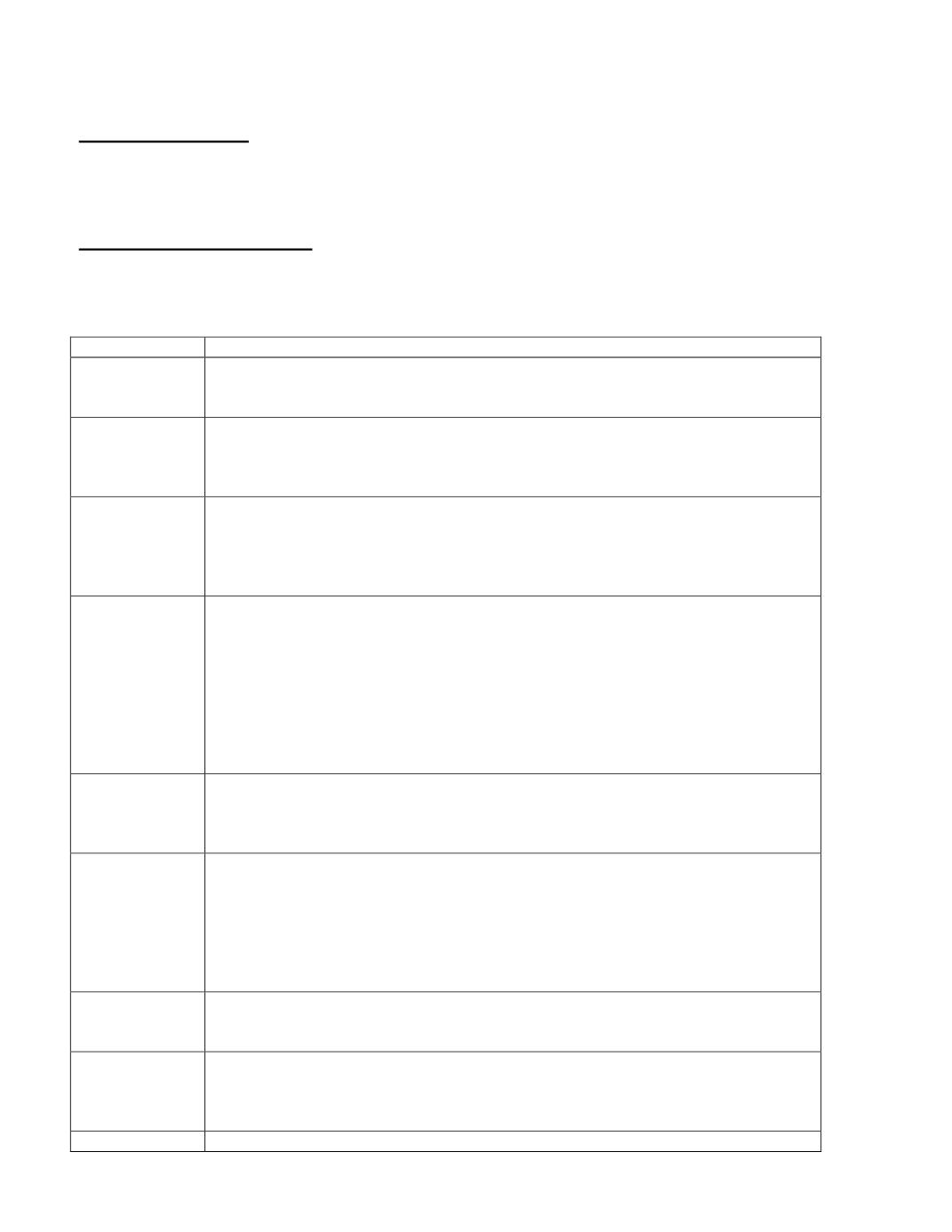

D 60-69
Policy on Plagiarism:
You are responsible for knowing and understanding the school’s policy regarding
academic honesty. This policy includes plagiarism: the use of someone else’s ideas as your own. You
may use the ideas and language of others in your writing, but you must acknowledge the source (using in-
text citations and a Works Cited page).
Course Withdrawal Deadline
Friday, November 14
th
is the last day to withdraw from the course.
Writing Assessment Criteria
Criteria
Performance Measurement Indicators
Audience and
Purpose
Clearly defines topic and purpose (inform, describe, persuade, etc.). Demonstrates
understanding of the information needs and interests of the audience.
Structure
Adheres to organizational pattern and structure of required rhetorical mode (Narration,
Description, Comparison and Contrast, Argument, Process Analysis, Classification and
Division, Research Report, etc.).
Title and
Introduction
Connects with audience using interest-generating forecasting title. Introduction utilizes
an effective opening strategy appropriate to the subject (i.e.; question, anecdote,
startling statistic, example, story, quotation, etc.). Includes a clearly written thesis
statement that effectively identifies topic and author’s focus.
Body
Supporting paragraphs are organized logically and effectively in spatial, emphasis, or
chronological order. Each supporting paragraph contains a focused topic sentence that
supports the thesis. Each paragraph is unified; all sentences support the topic sentence,
using concrete evidence and details. Paragraphs are coherent; ideas flow logically
through the paragraph. Appropriate transitional words or phrases signal changes in
support or content. Transitions make logical connections (items in a series, result or
cause, summary, etc.), spatial connections (directions, proximity, distance), or
chronological connections (frequency, duration, sequence of events).
Conclusion
Conclusion utilizes effective closing strategy without introducing new ideas. Offers
sense of completeness. Reinforces thesis statement. Concludes with summary,
recommendation, call to action, comment on broader implications, or prediction.
Word Choice,
Tone, and Style
Word choice is varied, imaginative, precise, & appropriate to topic and audience.
Phrasing is concise and fluent. Avoids clichés, triteness, overstatement, and inaccurate
or shallow vocabulary. Sentences are varied in length and type. Uses consistent tense.
Words clearly convey intended meaning. Tone is appropriate to topic, purpose, and
audience. Makes appropriate use of 1
st
person conversational writing style for informal
or narrative writing, or appropriately uses 3
rd
person for formal writing.
Grammar and
Mechanics
Adheres to conventions for standard grammar. Sentences are correctly structured,
clear, concise, and logically organized. No errors in spelling, punctuation, or usage.
Document
Format and
MLA Style
Document meets all formatting requirements for margins, type style, white space,
headings, illustrations, and layout. If MLA style is used, document meets all MLA
formatting and style requirements.
Research,
Demonstrates adequate level of research utilizing credible sources. Presents researched


















